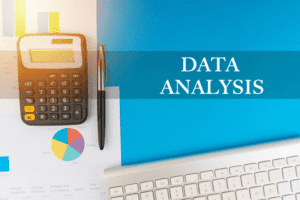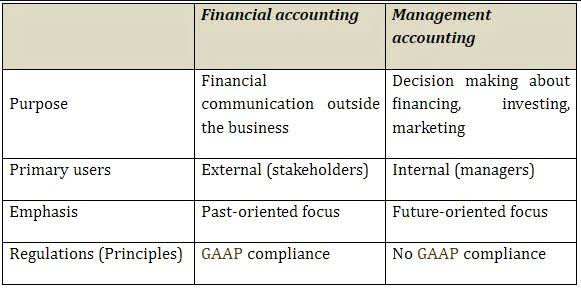Here, a Subsidiary Ledger is a ledger recording detailed information of the related Control Account. Accounts Receivable is most commonly used as a General Ledger Control Account. Furthermore, you can refer back to the details with regards to the sales made in case you need to do so in the future. Likewise, Sales Ledger also helps you https://www.business-accounting.net/ to keep track of payments received and yet to be received from your customers. Here’s what you need to know about this stalwart of business bookkeeping. Using a GL will keep you up-to-date on your cash flow, debts, and spending, so you can watch for trends and make adjustments to your business operations to maximize profits over time.
Determine Which Features You Want To Include
It’s essential to have an accurate accounting of all transactions so that financial statements are correct. This is often the role of a bookkeeper or other accounting staff,” said Cross. A complete list of all general ledger accounts that a company uses is contained within the chart of accounts, which is a simple listing of account numbers and account descriptions. The chart is usually organized to show all balance sheet accounts, followed by all income statement accounts. Examples of other general ledger accounts that are commonly used are noted below.
How to Write a Business Proposal [Examples + Template]
Trial balances are a financial tool specific to double-entry bookkeeping. If you choose to set up a double-entry ledger, you should be ready to prepare trial balances regularly. To maintain financial health, your total debit balances must equal your total credit balances. When you record a financial transaction, it’s called a journal entry, because bookkeeping has always been done by hand, in journals. A journal entry is a sequential list of accounting entries recording transactions while a GL is a formalized account system where recorded transactions in a journal are posted. The GL is a big part of your company’s overall financial picture, acting as an important repository of all your accounting data.
How are Transactions Recorded in the General Ledger?
Thus, you as a business owner cannot evaluate your company’s liquidity, profitability, and overall financial position. A General Ledger is a Ledger that contains all the ledger accounts other than sales and purchases accounts. Therefore, you need to prepare various sub-ledgers providing the requisite details to prepare a single ledger termed as General Ledger. Thus, accounts that get Debited or Credited are used to denote the give and take involved in every transaction. So such a system of debit and credit helps in finding out the final position of every item at the end of the given accounting period. These codes are sometimes called an “account number.” In this example, all puppet-making-material purchases are coded 205, all sales revenue is coded 103, and so on.
The Importance of General Ledger Accounts
Then, you summarize that information in a master notebook—the general ledger. In accounting, the terms debit and credit differ from their commonplace meanings. Whether each adds to or subtracts from an account’s total depends on the type of account. For example, debiting an income account causes it to increase, while the same action on an expense account results in a decrease. Goods-receipt/invoice-receipt accounts can have either a credit or debit balance.
In addition to the chart of accounts, the general ledger also includes financial transactions, account balances, and accounting periods. Each category has its own separate accounts which record specific transactions. For example, assets may include a cash account, accounts receivable, inventory, investments, and fixed assets. These accounts only contain summary balances that have been posted from subsidiary ledgers.
What is a General Ledger and why is it important?
Every business transaction is recorded twice—once as money leaving an account (a credit) and again as money entering an account (a debit). In the past, the general ledger was literally a ledger—a large book where financial data was recorded by hand. Of course, it’s still possible to do your bookkeeping with a paper ledger. But since bookkeeping by hand takes 1,000 times longer, most business owners and bookkeepers use accounting software to build their general ledgers. These transactions can include cash payments against an invoice and their totals, which are posted in corresponding accounts in the general ledger. In accounting software, the transactions will instead typically be recorded in subledgers or modules.
- Think of it as double-checking your math to make sure everything adds up correctly.
- This is where you keep an eye on transactions manually, entering debits and credits by hand or simple computer programs.
- This data from the trial balance is then used to create the company’s financial statements, such as its balance sheet, income statement, statement of cash flows, and other financial reports.
Transactions are posted to individual sub-ledger accounts, as defined by the company’s chart of accounts. General Ledger Accounts (GLs) are account numbers used to categorize types of financial transactions. A “chart of accounts” is a complete listing of every account in an accounting system. GL coding involves assigning an alphanumeric value to different transactions, effectively categorizing them into different expense types.
In SAP S/4HANA revenues, expenditures, and cost are represented by financial accounts and separated by the Account Type of the accounts. Based on the account type, the accounts used in CO are also called cost elements. There are many ways to separate what are the meanings between ‘incur’ and ‘occur’ in accounting the general ledger into groups of accounts with common characteristics, these are more fully discussed in our subsidiary ledgers in accounting post. For a small business the most common way to split the ledger is into four subledgers.
Transaction data is segregated, by type, into accounts for assets, liabilities, owners’ equity, revenues, and expenses. The trial balance is a report run at the end of an accounting period, listing the ending balance in each general ledger account. The initial trial balance that is run at the end of an accounting period is called the unadjusted trial balance. In the case of certain types of accounting errors, it becomes necessary to go back to the general ledger and dig into the detail of each recorded transaction to locate the issue. At times this can involve reviewing dozens of journal entries, but it is imperative to maintain reliably error-free and credible company financial statements.
Once the Journal is complete, these transactions are then posted to individual accounts contained in General Ledger. The reconciliation process is a matter of double-checking important accounts. Reconciliation involves checking each account within a general ledger to verify accuracy. The process begins by gathering the information for each account in review, then examining any journal entries which have been made to correct errors in the ledger.
Under this step, you need to check the amounts recorded in each transaction forming part of your General Ledger. So,you will have to keep your source documents handy if you are preparing your General Ledger Accounts manually. Unlike Operating Expenses, the Non-Operating Incomes and Expenses are one-time incomes or expenses that you earn or incur. The stockholder’s equity refers to the excess of assets over liabilities of your business. In other words, these are the assets remaining after you pay off all the debts and the liabilities. This is because you can easily verify if various accounting items are classified and recorded accurately with the help of the given information.








